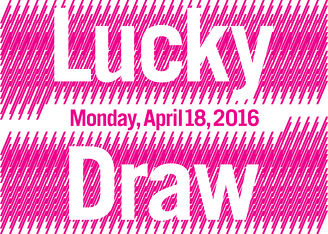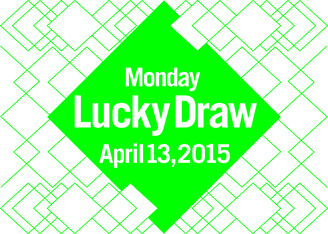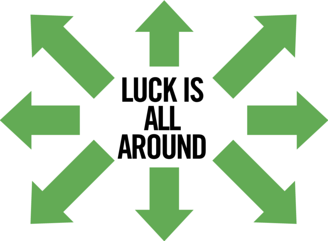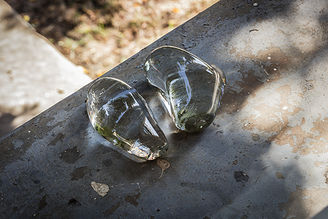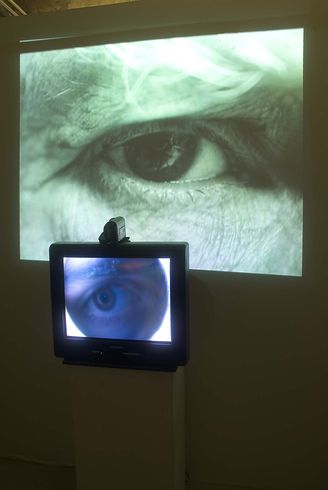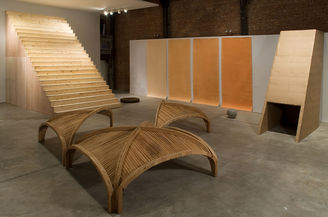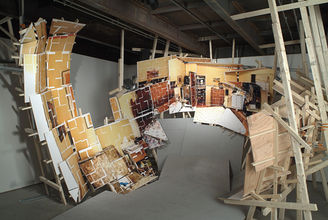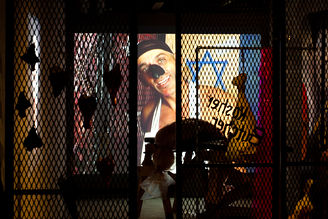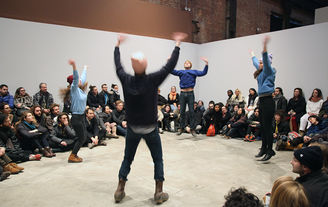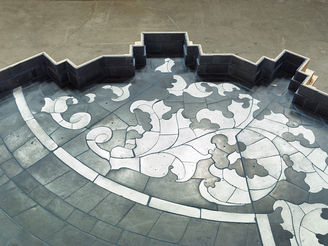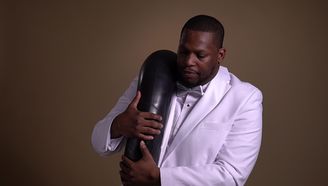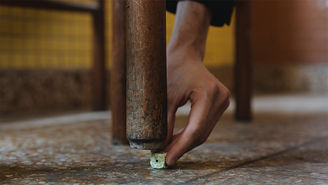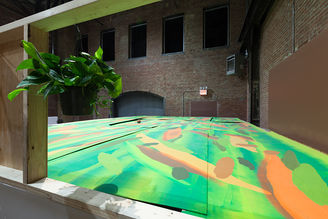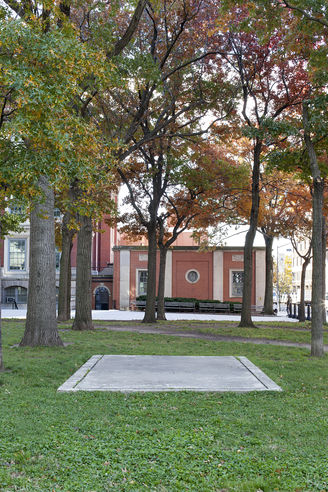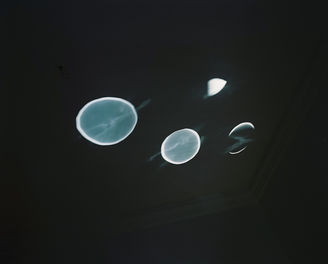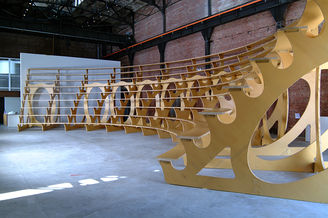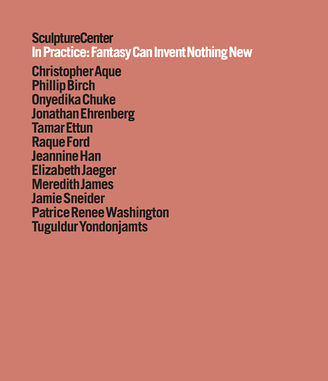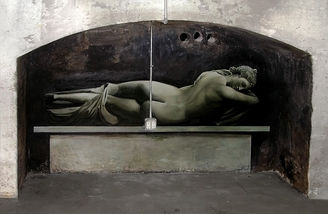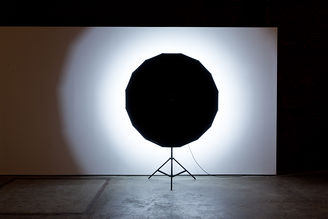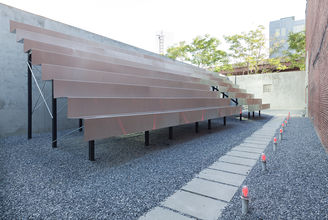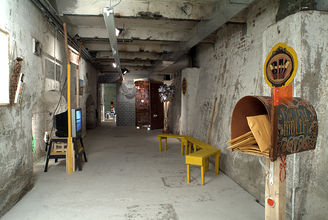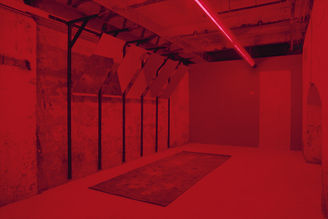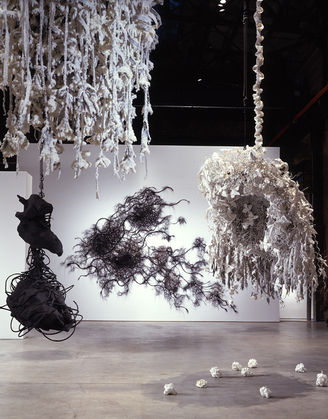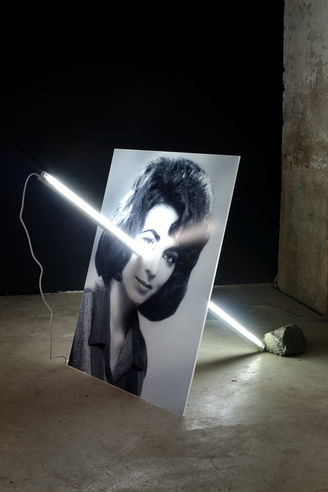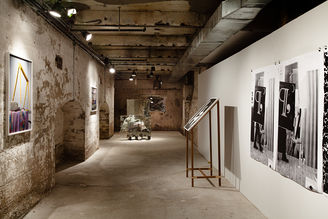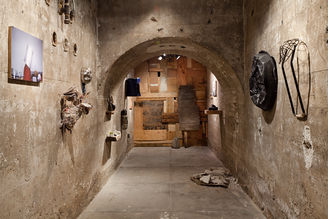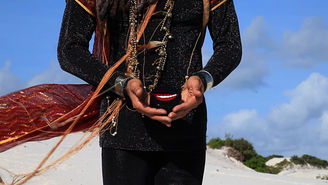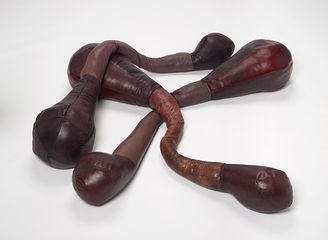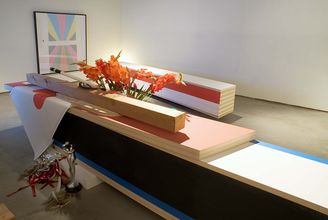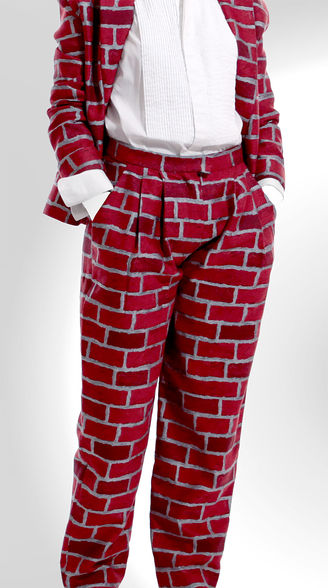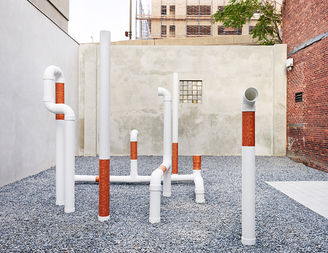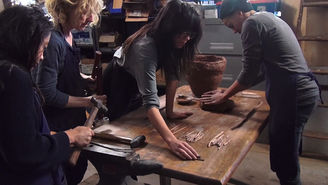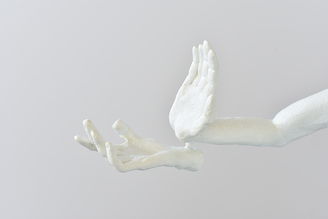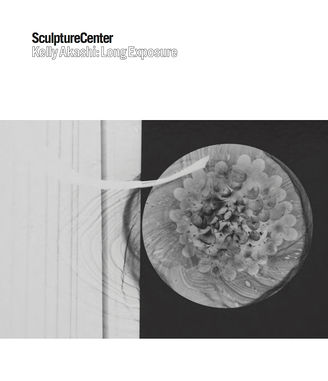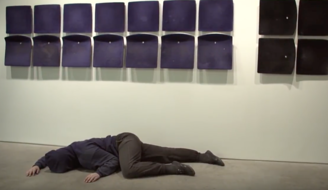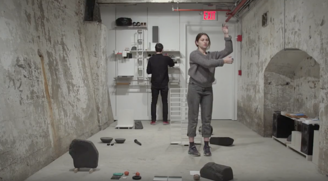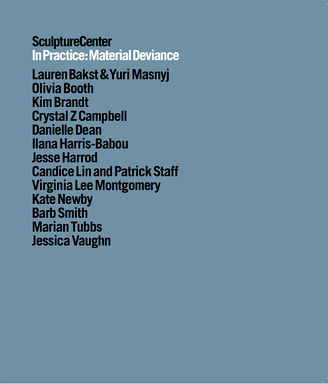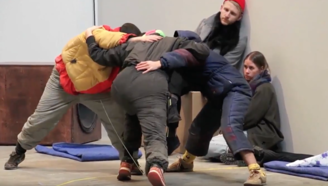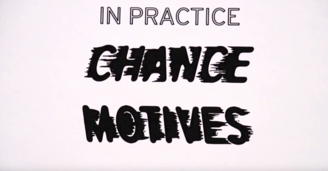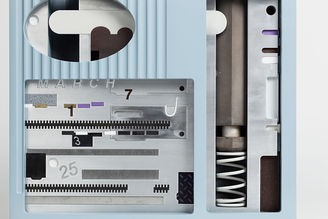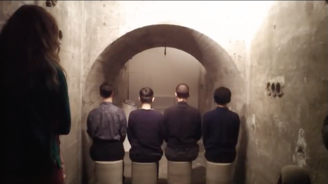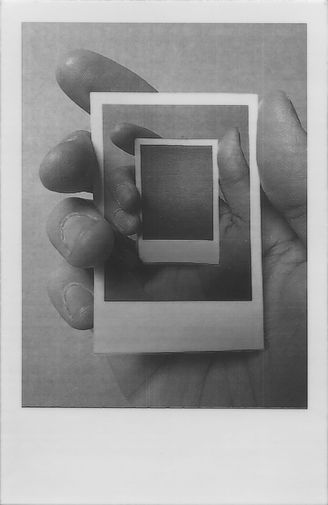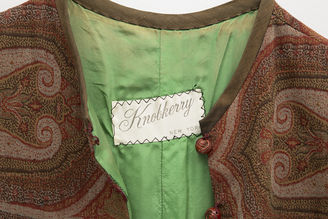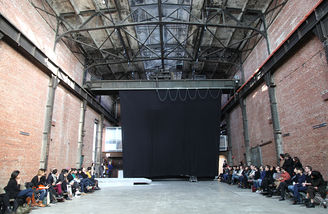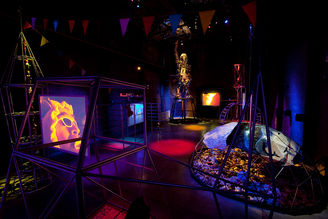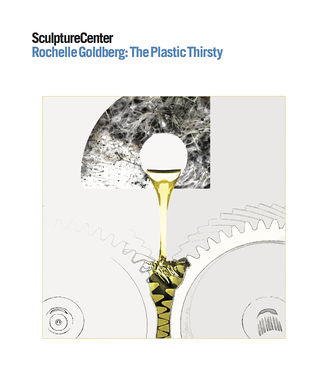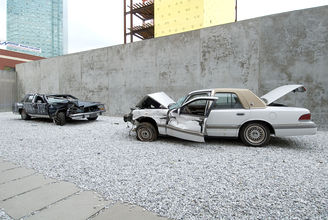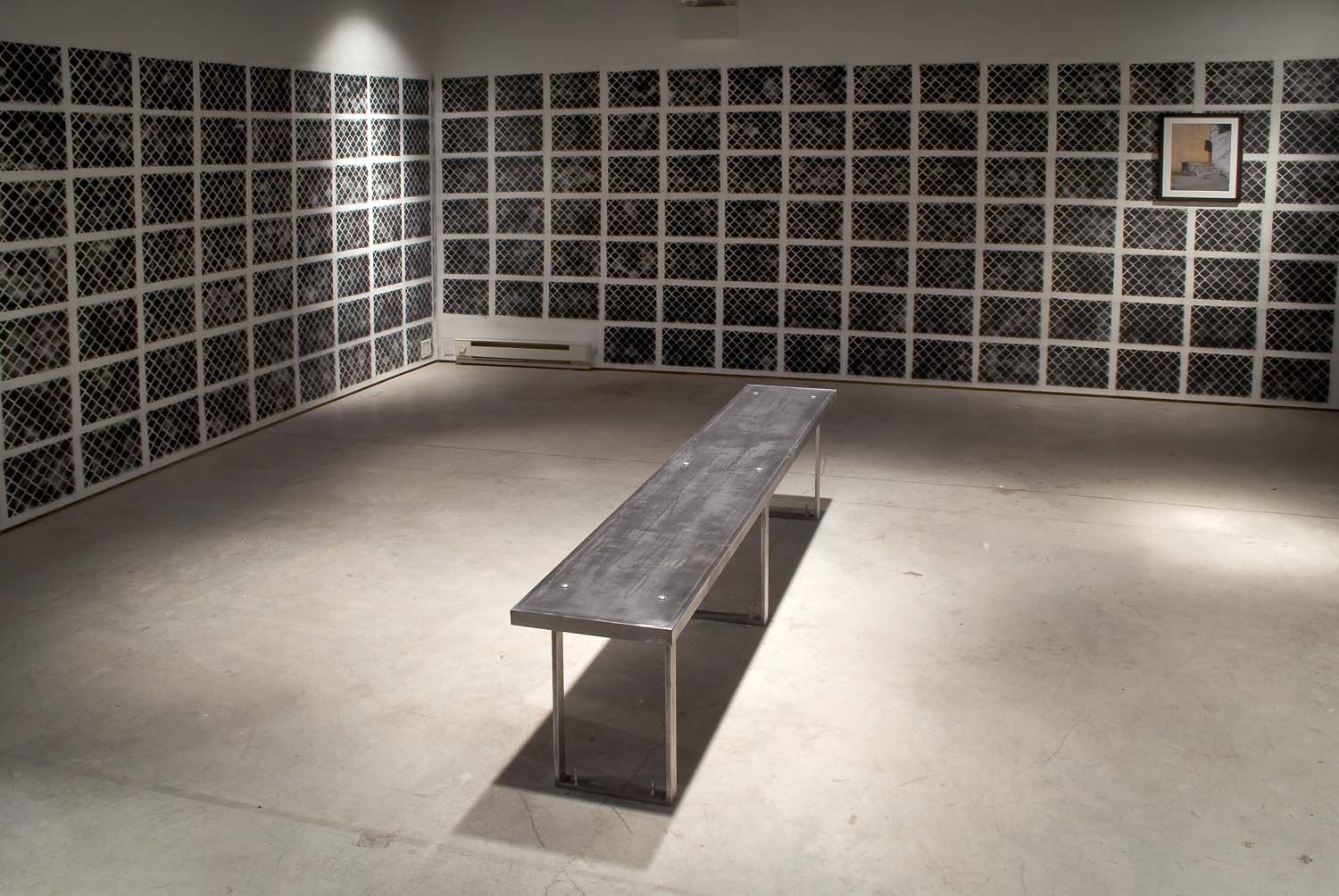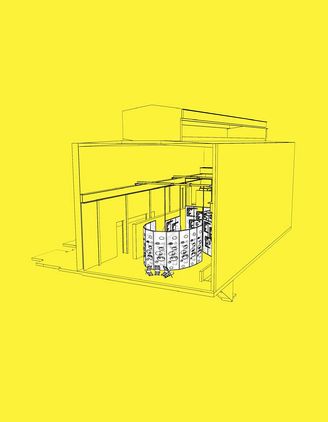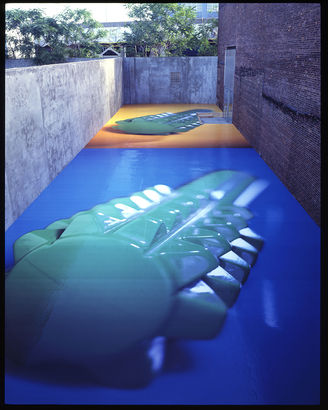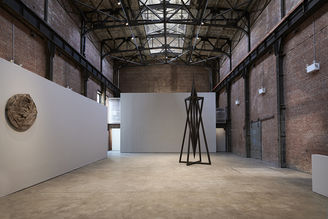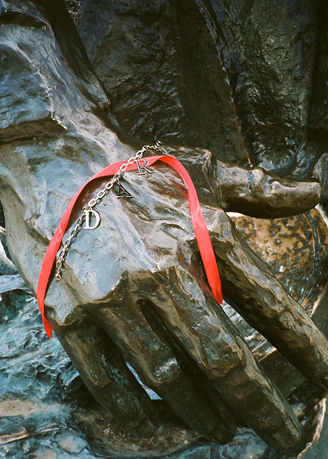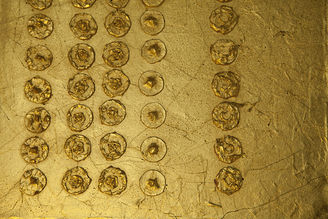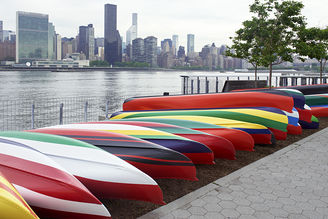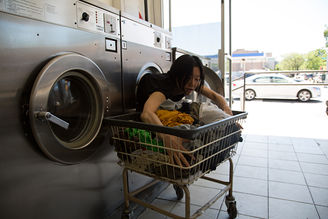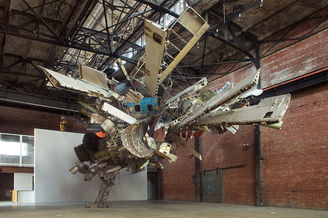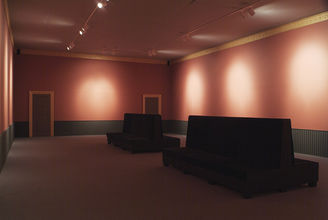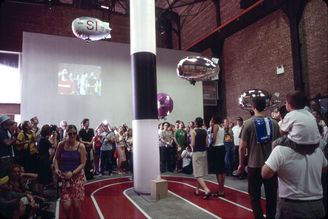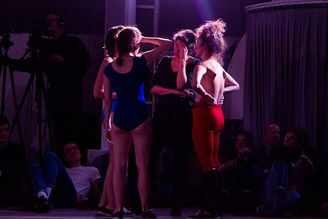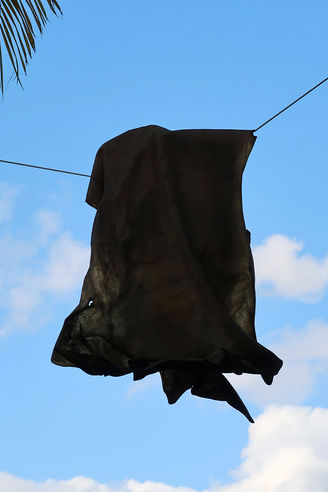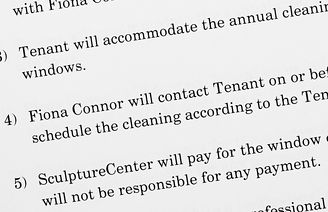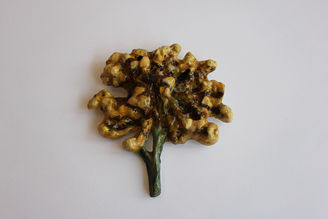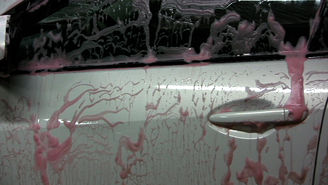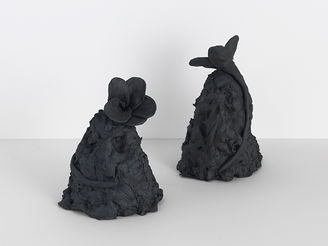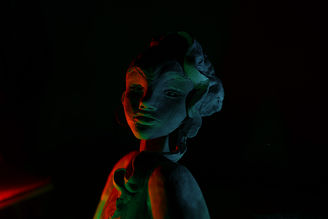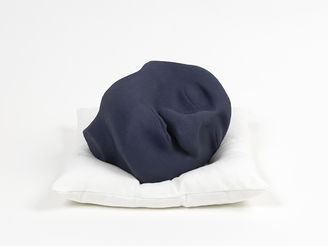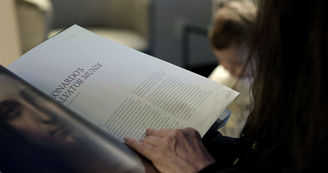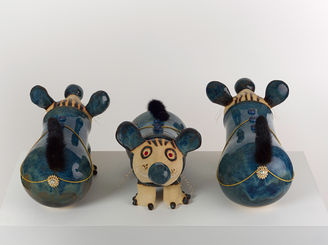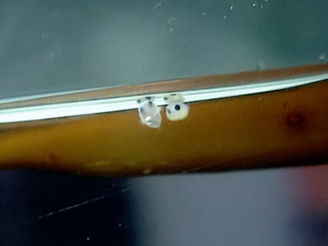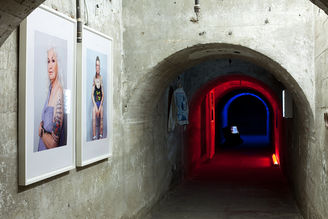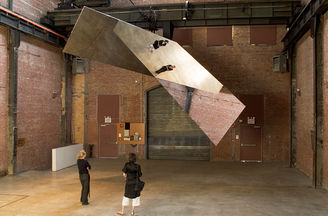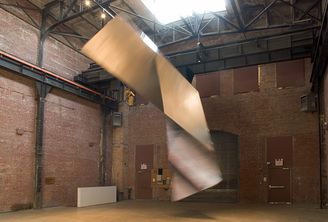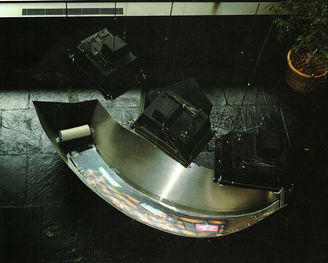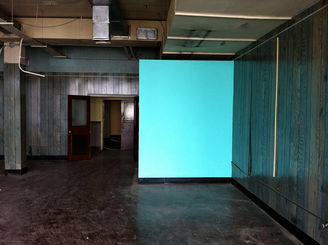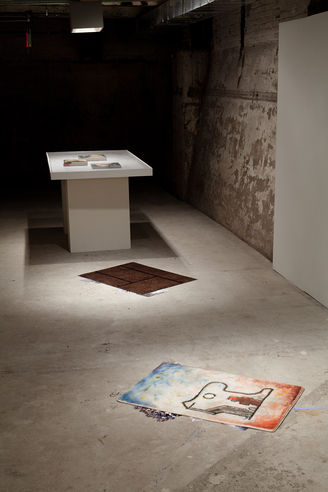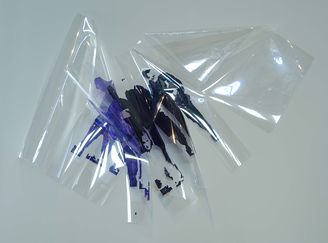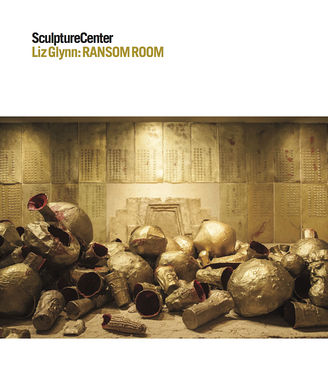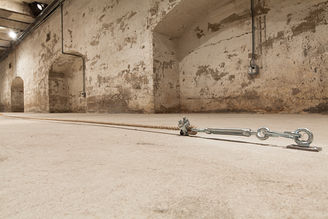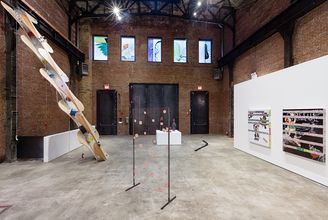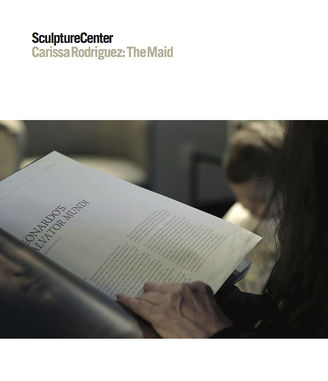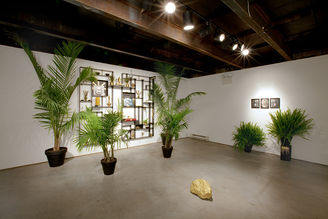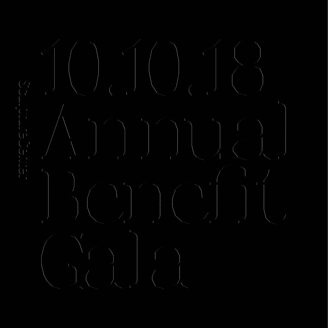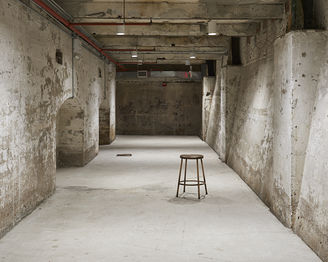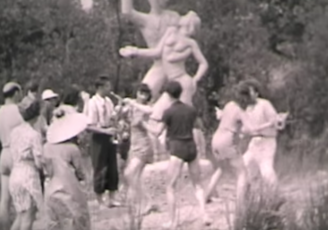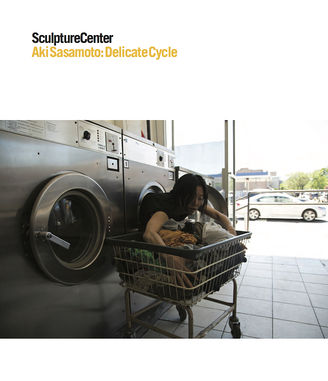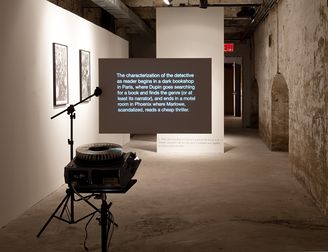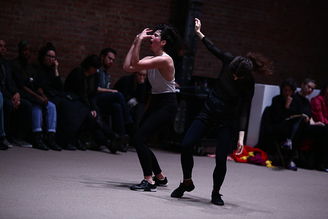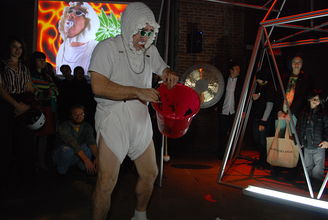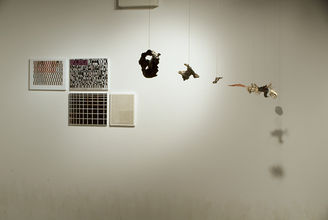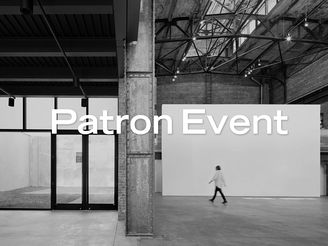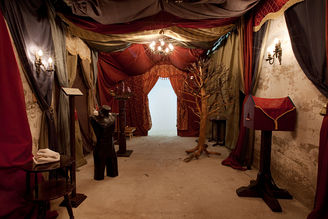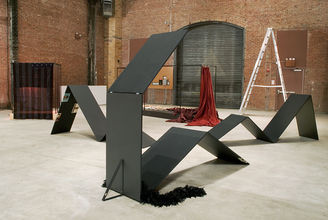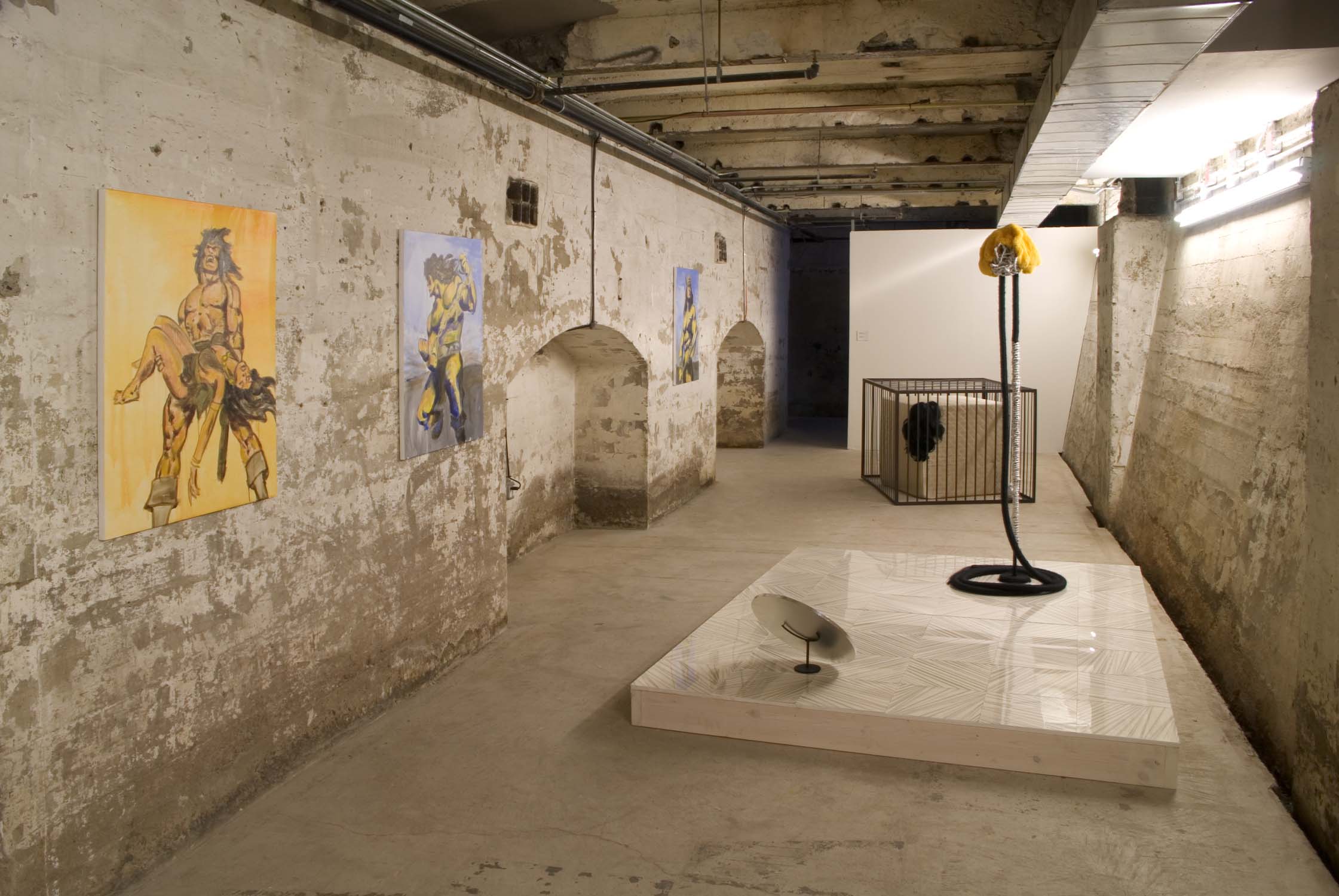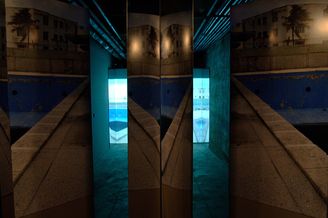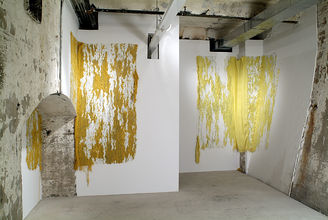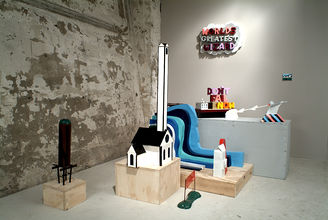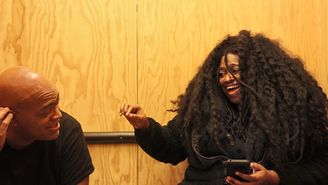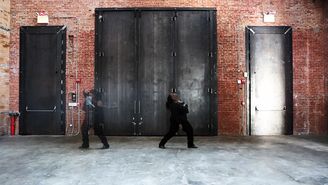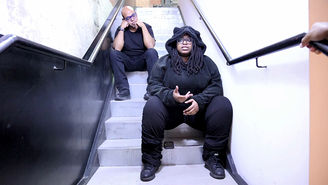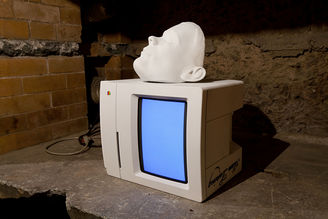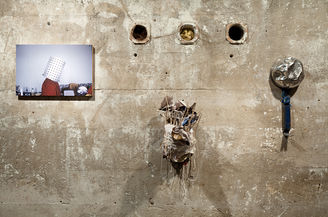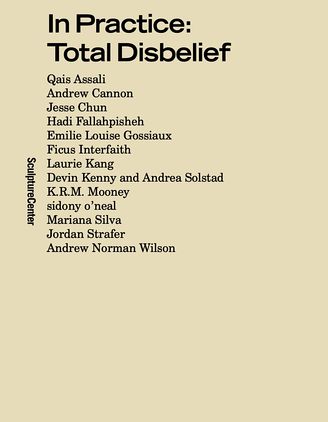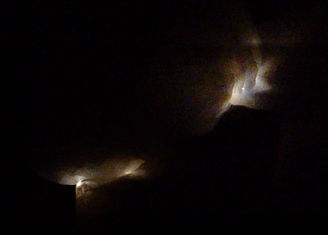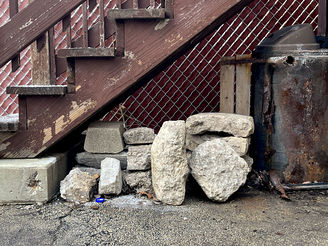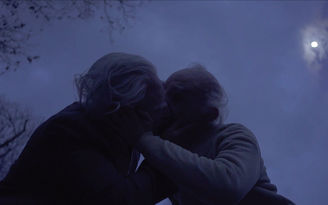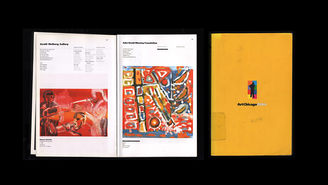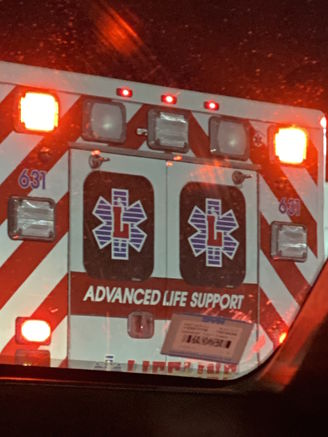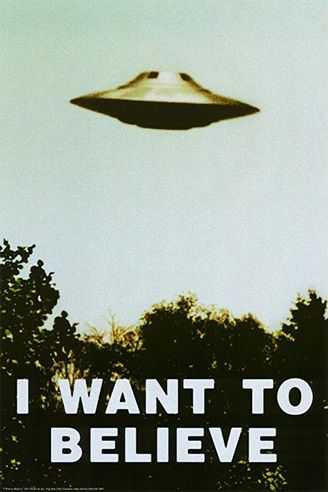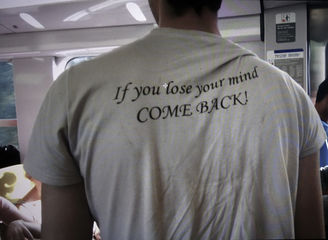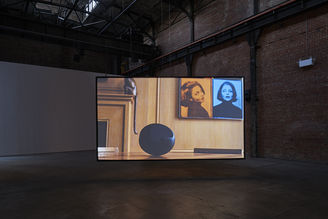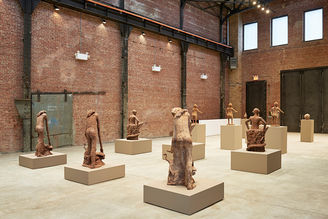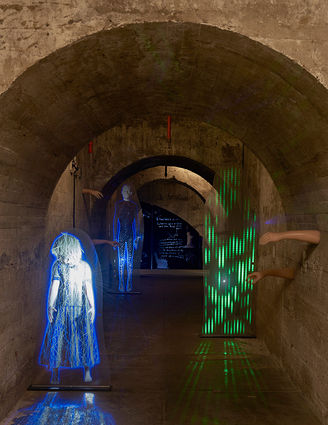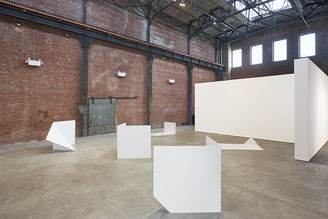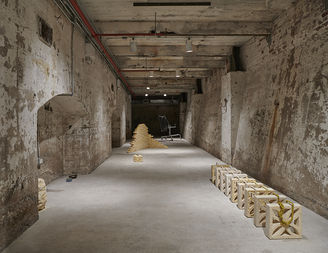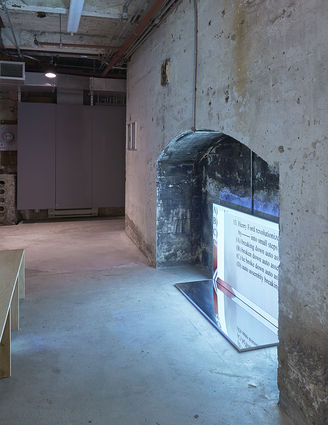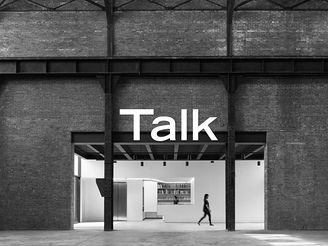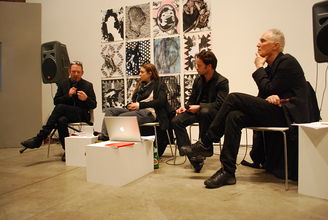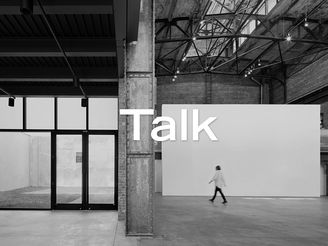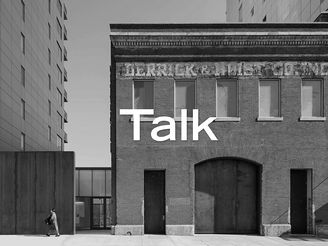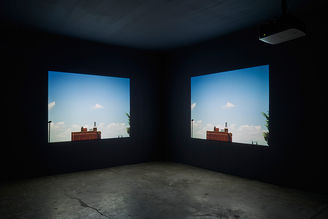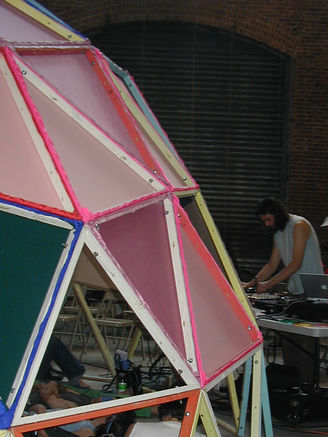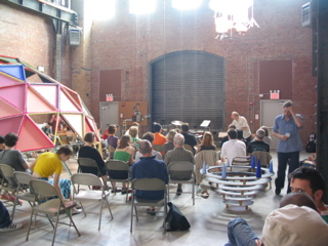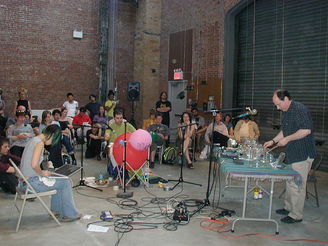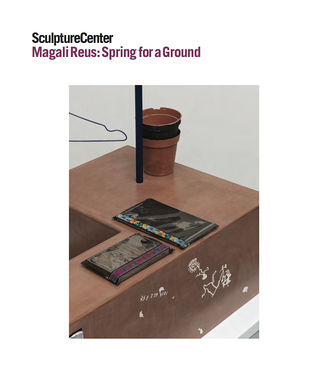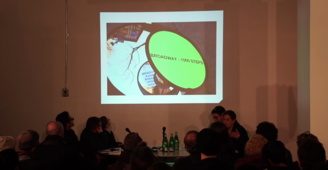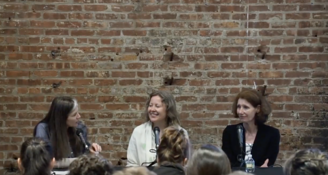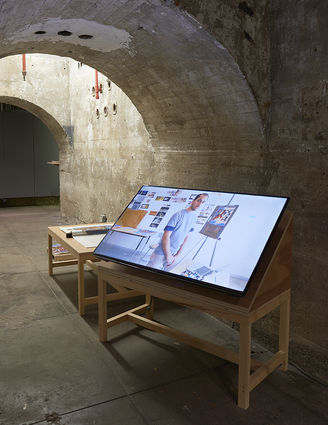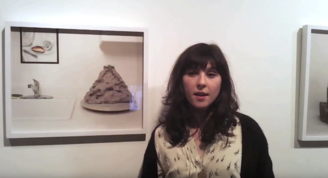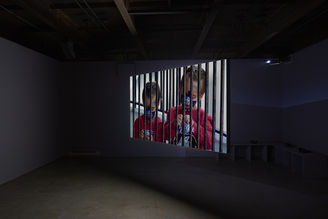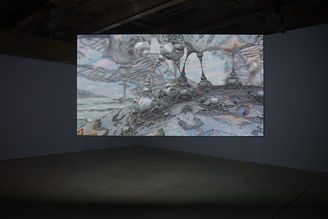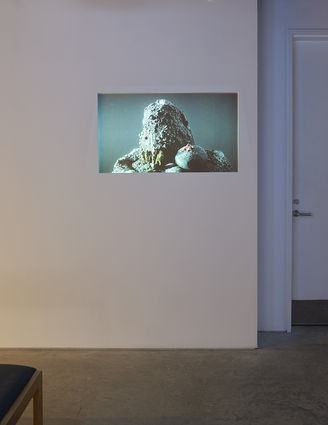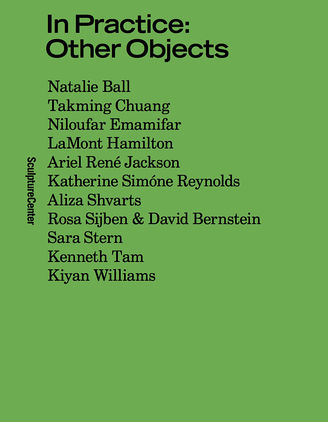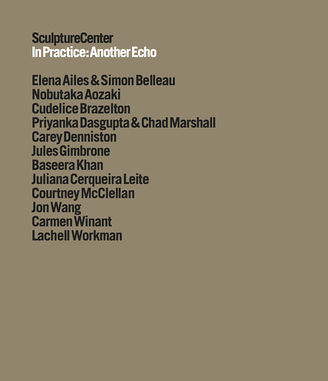In Practice Winter '06
In Practice Winter '06Jan 8–Apr 3, 2006
- Images
- Text
- Press
- Sponsors
- Related
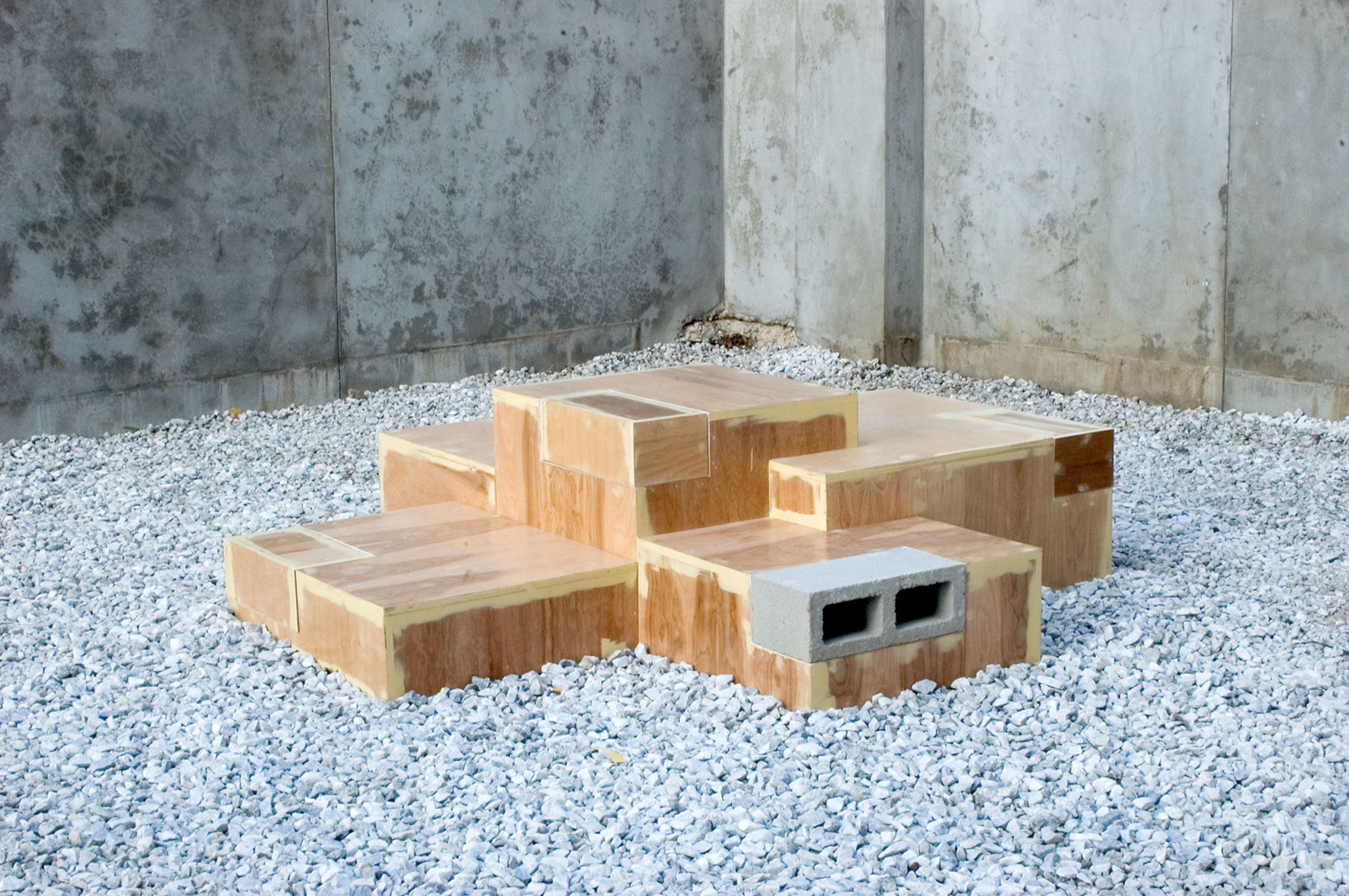

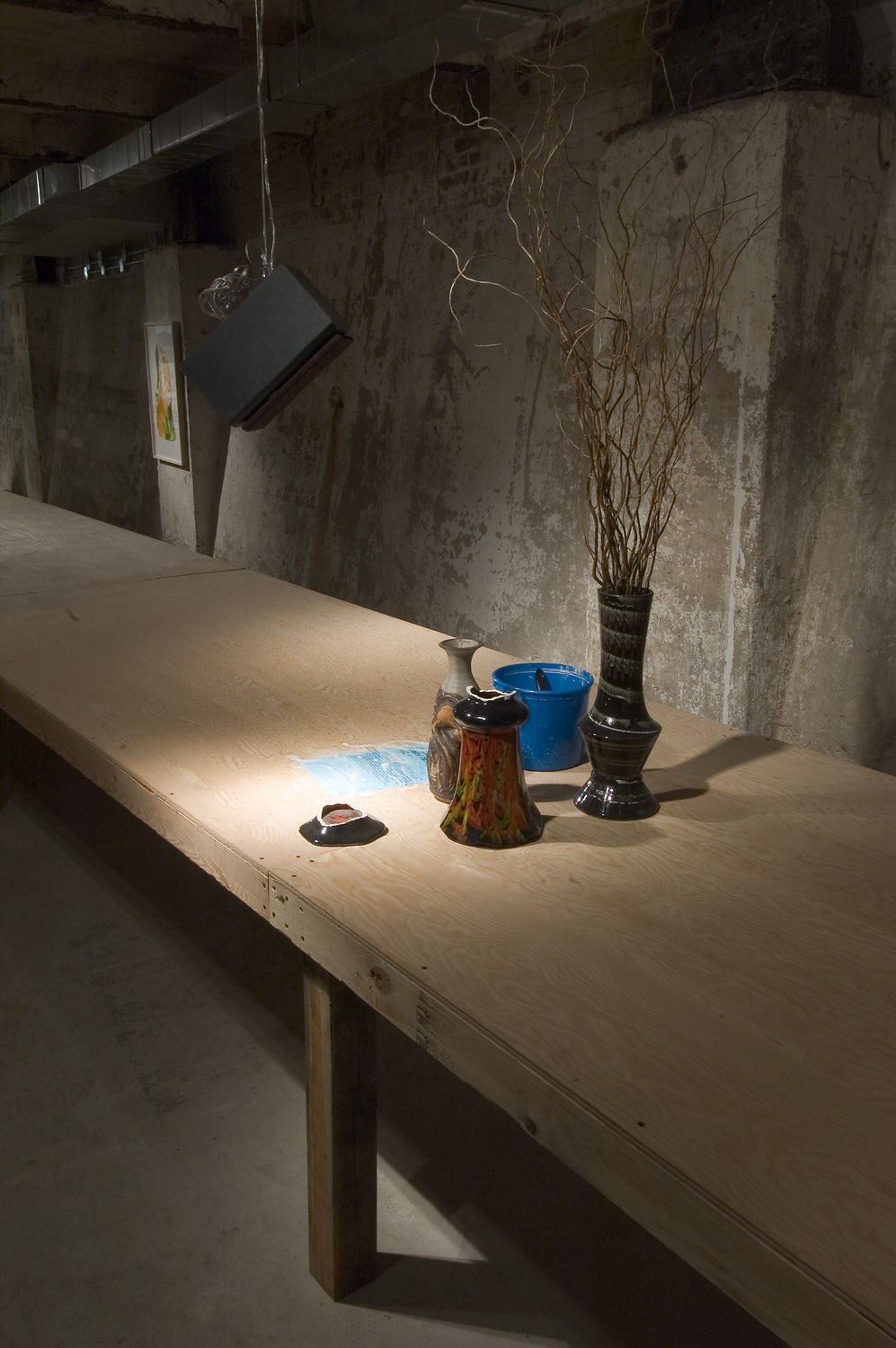
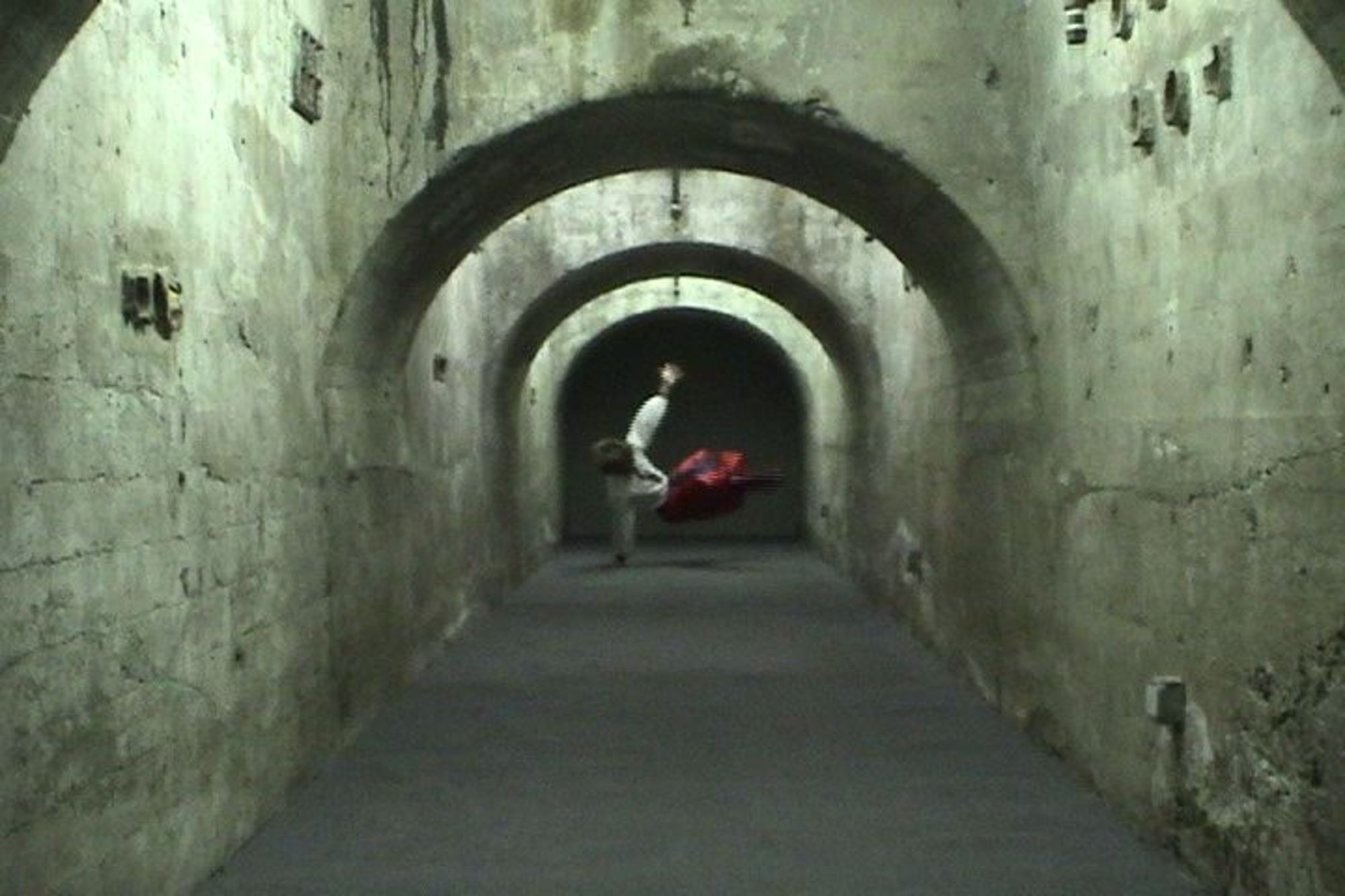
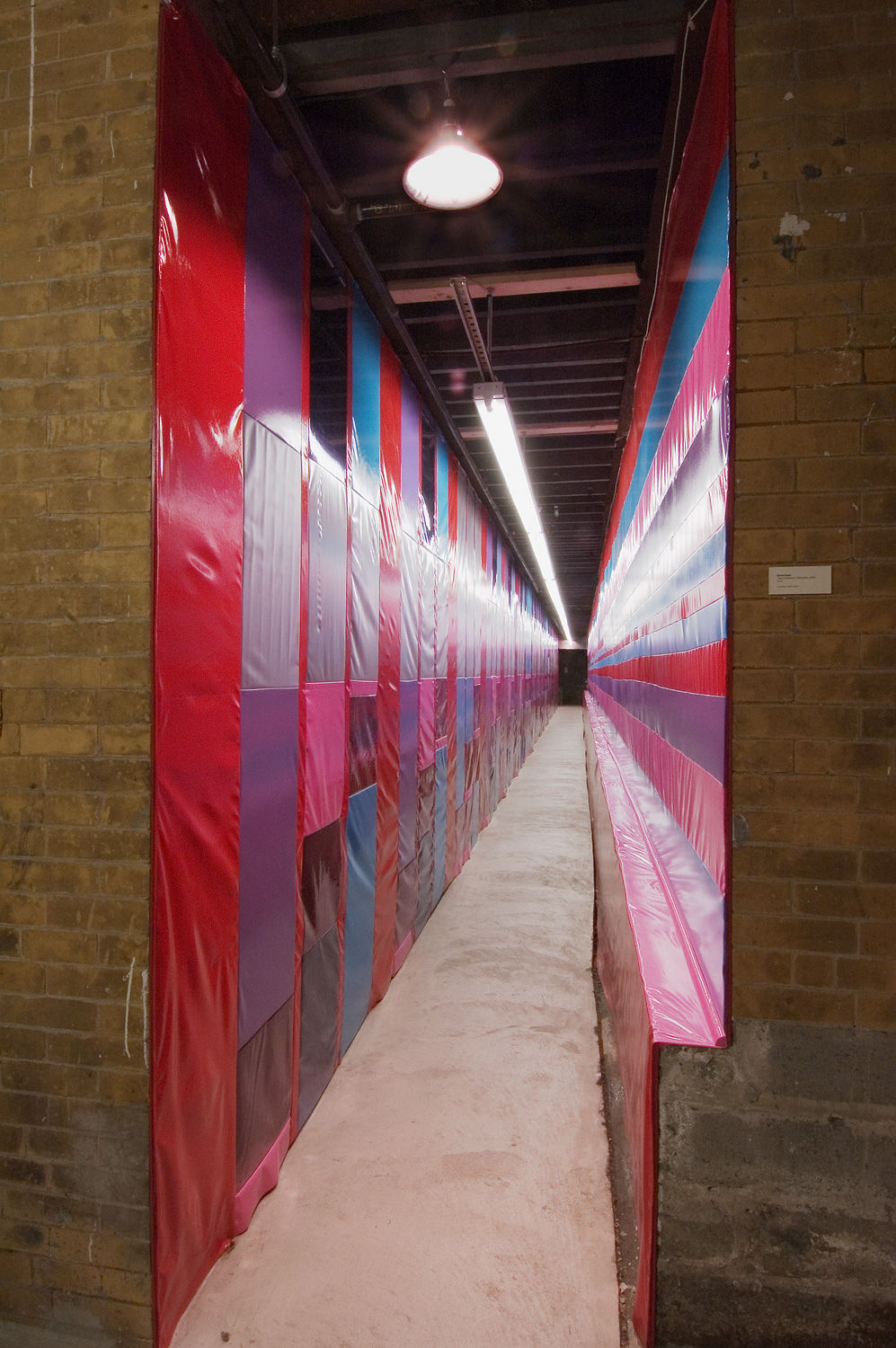
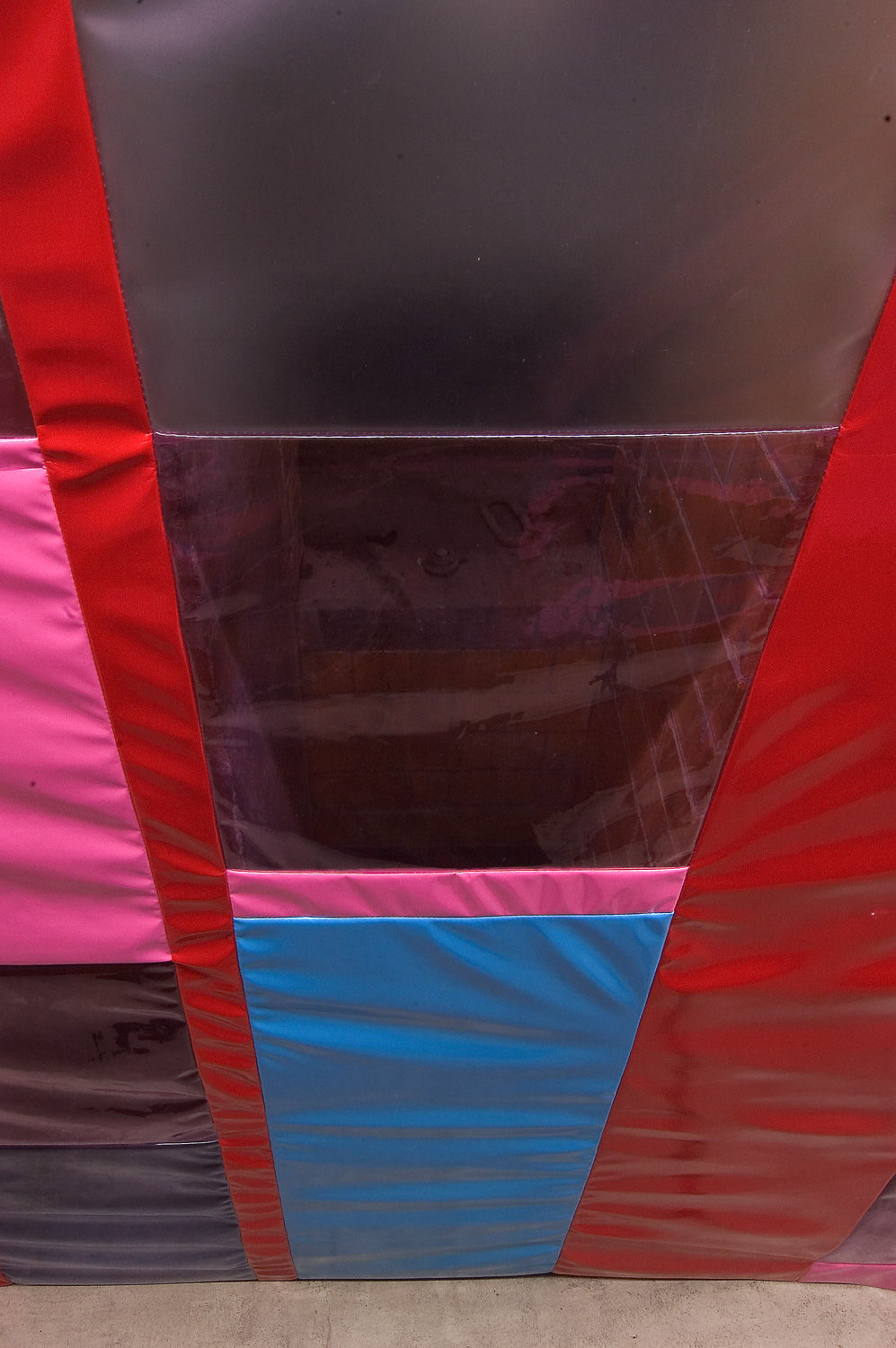
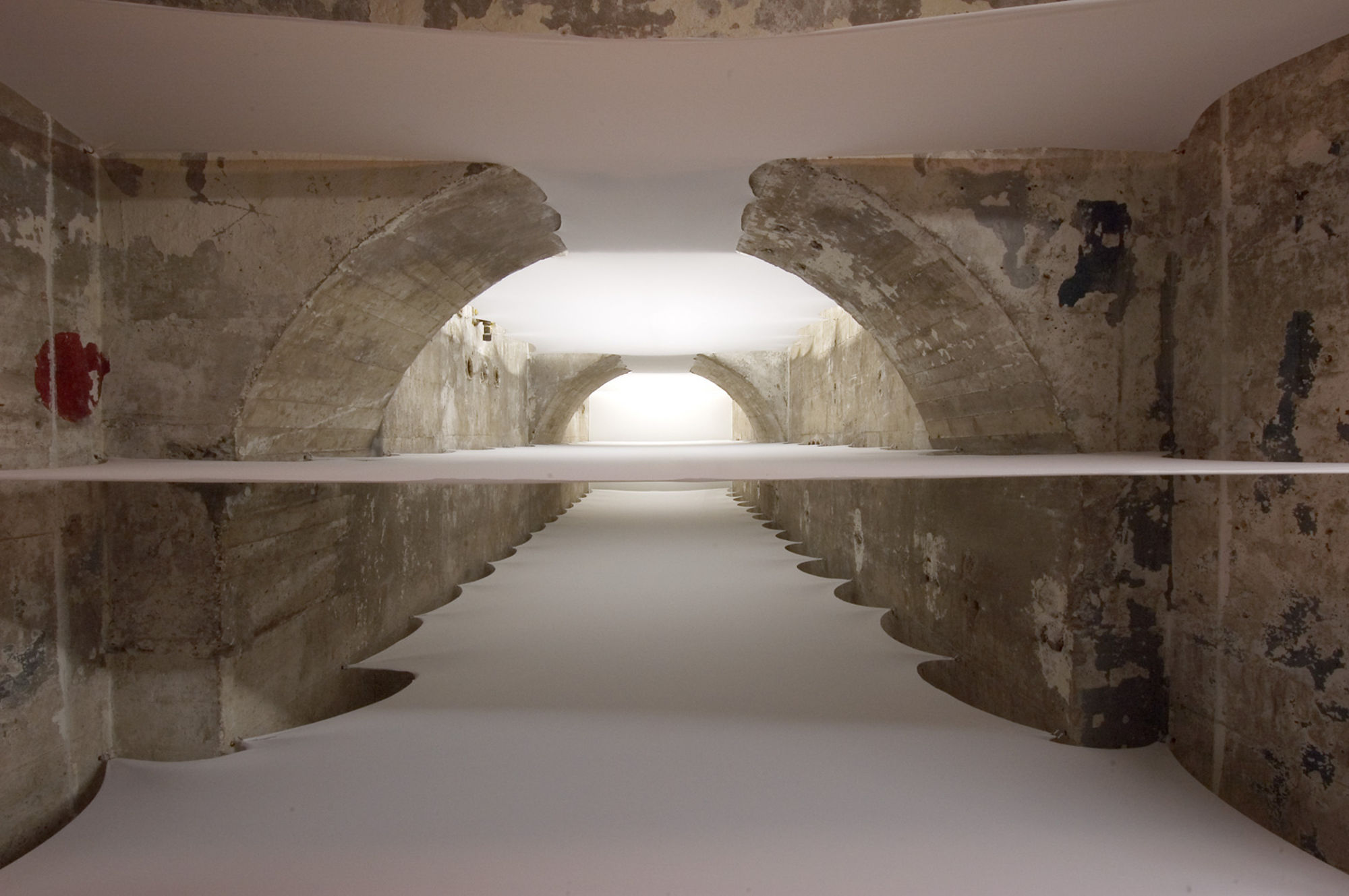
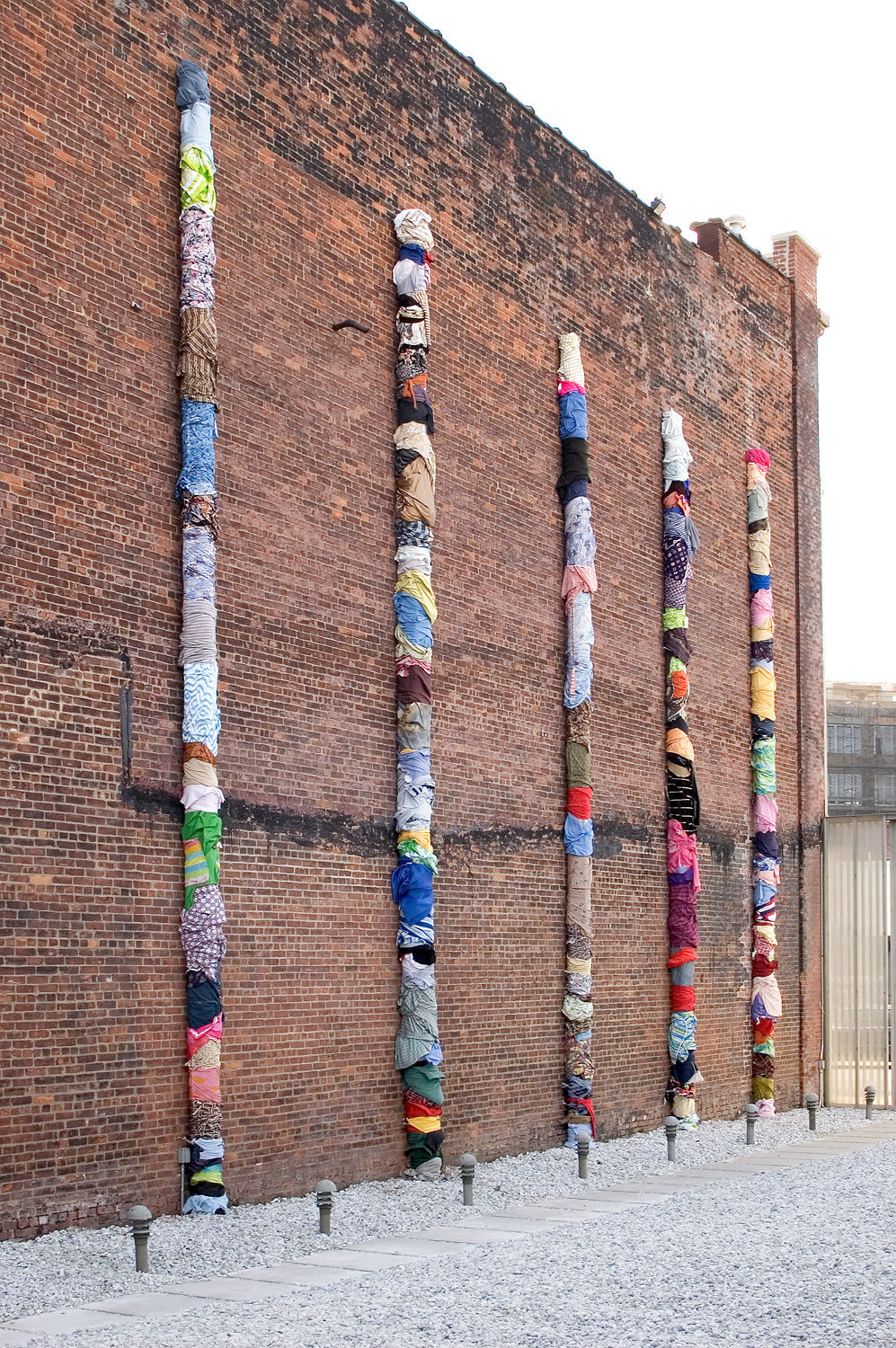
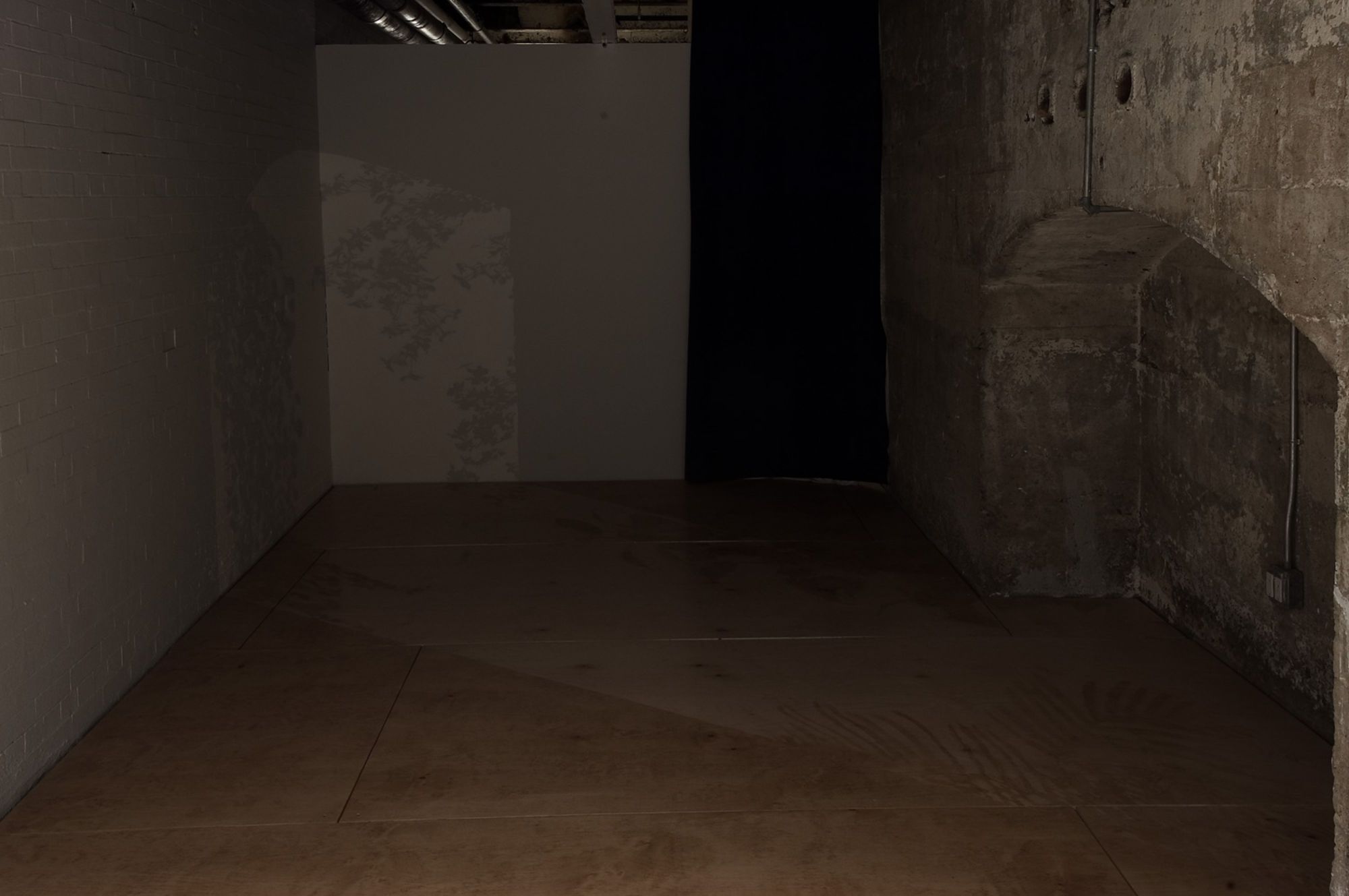
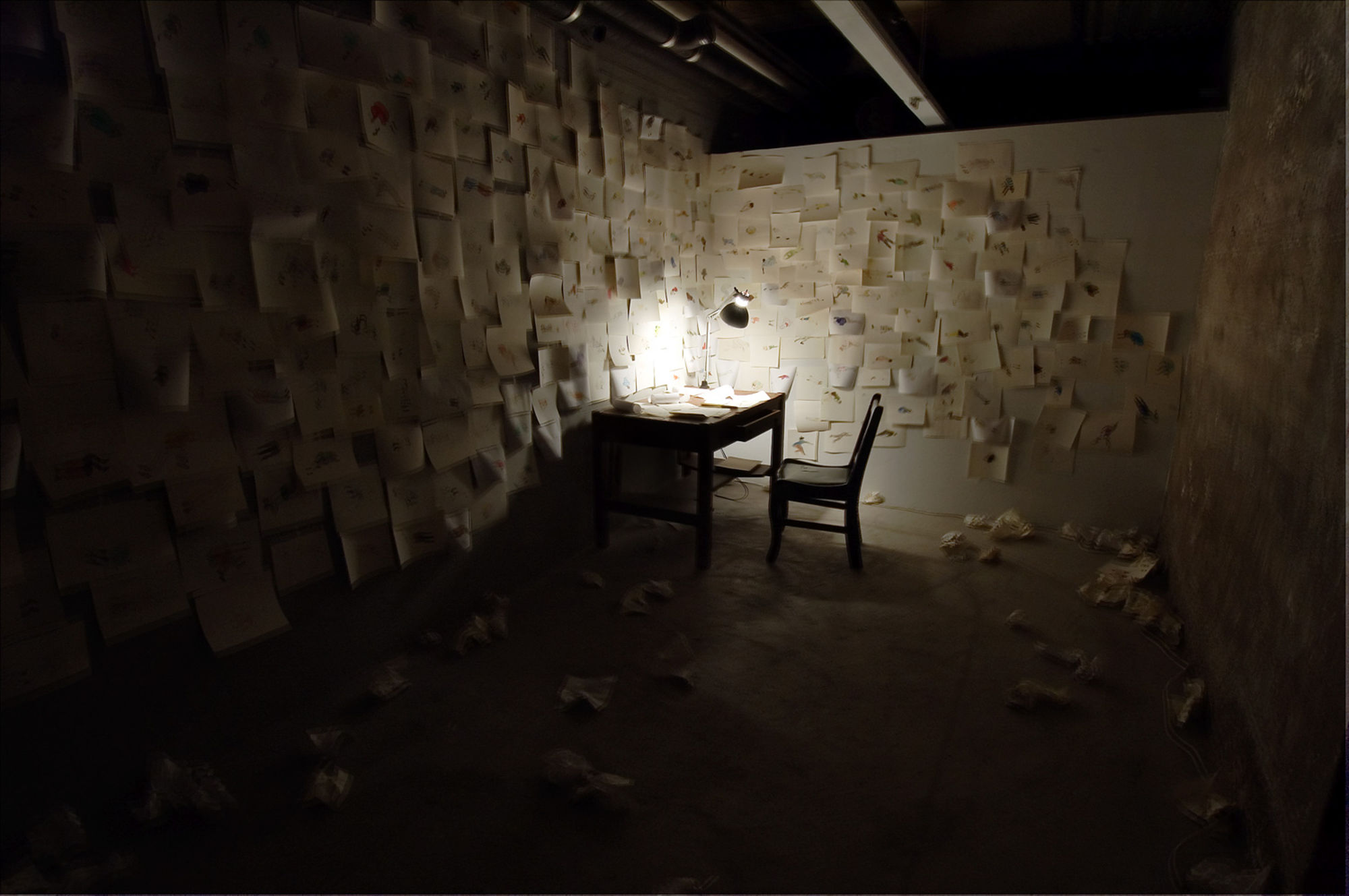
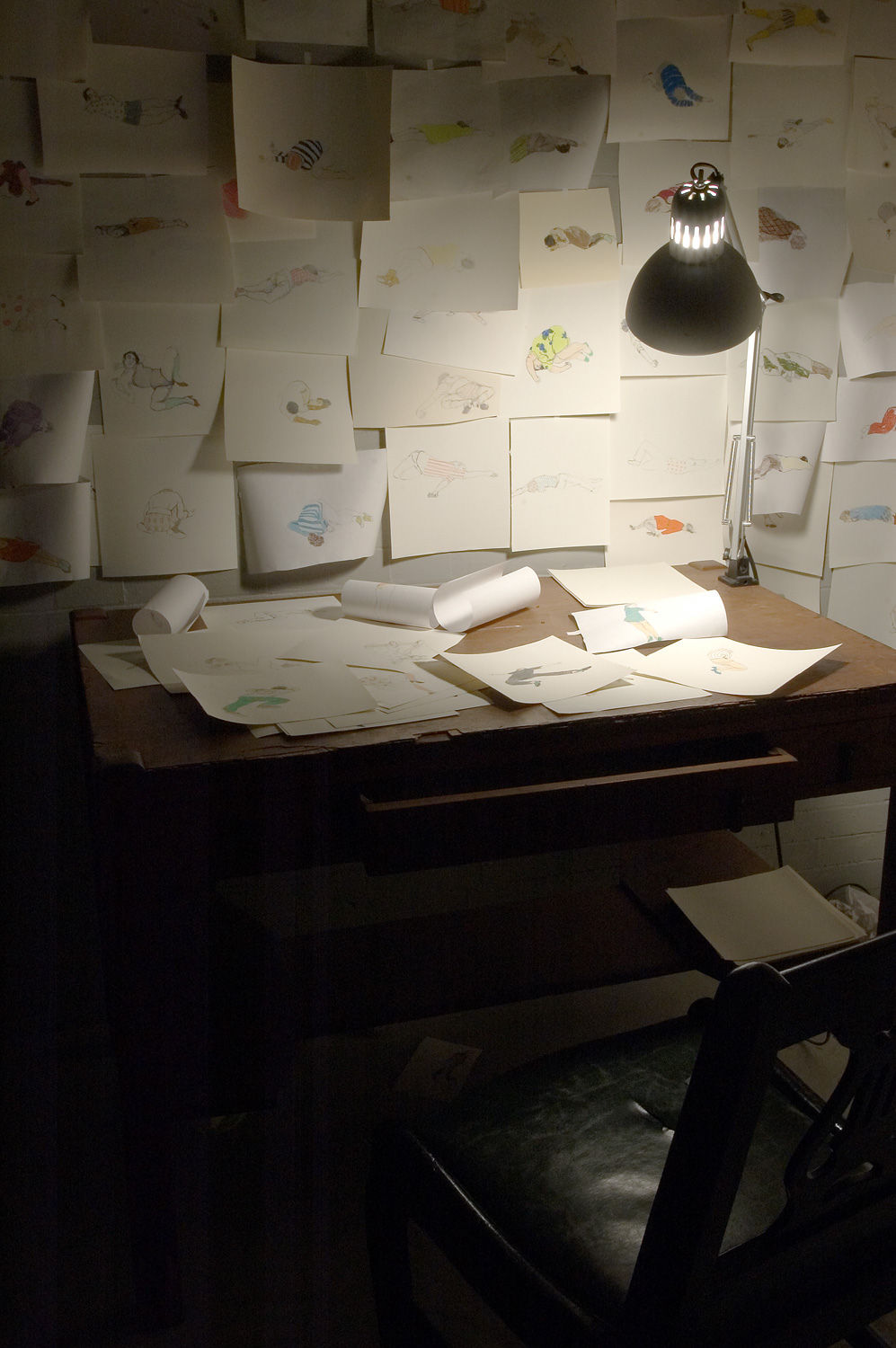
Justin Beal, After the Albert Memorial, 2006. Plywood, cinderblock.
The works in this exhibition are commissioned through SculptureCenter's In Practice project series, which supports the creation and presentation of innovative work by emerging artists. The projects are selected individually and reflect the diversity of approaches to contemporary sculpture.
Justin Beal's new work After the Albert Memorial translates the composition of Sir Gilbert Scott's Albert Memorial in London into a compilation of found objects. After the Albert Memorial focuses on a detail of one of London's most ostentatious memorials, and is also inspired by Alison and Peter Smithson's Collector's Table and the three-tiered podiums commonly used in Olympic ceremonies. Constructed of plywood and a cinder block, the outdoor installation reclaims the concept of a memorial and the logic of celebration while simultaneously monumentalizing found objects and construction materials.
The centerpiece of Bozidar Brazda's new work Politics in the lower-level galleries is long tables that run the length of the space, covered with a variety of objects including ceramics, speakers, and and 500 offset printed DVD cases of a fictitious film titled Never Eat Shredded Wheat The Fall of Western Civilization. The narrative is continued with two paintings hanging on opposite walls. Perhaps the meeting place for feuding or opposing factions, the space uses objects, images, and sound to suggest a story of a conflicted gathering: an underground restaurant that sits on the border of a divided city.
In Xavier Cha's site-specific installation Cossack's Dance, a Cossack (Turkish for freeman or freebooter) dancer visits SculptureCenter once a week to dance in the confined space of one of SculptureCenter's lower-level galleries. The Cossack dancer, due to purely physical constraints, is forced to adjust, even compromise his movements within a space that is inconvenient and unfriendly to performance. The aggressive architecture of the gallery gives shape to the performance, pulling and pushing it to extremes. The expansive and free movements of the Cossack are compressed, transforming the dance's formal, physical, and artistic properties. When the dancer is not present, the gallery remains empty, replaced only by a video on view at the reception desk.
Often using bright fabrics and light materials, Rachel Hayes alters how viewers experience edificial space. For SculptureCenter, the artist transforms a dark gallery into a corridor of bright colors by wrapping the long, narrow space with red and turquoise vinyl, its opaque and semi-translucent patterns echoing the lines and shapes of the exhibition space. The industrial brick and concrete gallery is upholstered, equally revealed and concealed, its awkwardness exaggerated and made into a bright plastic copy of itself.
In her site-specific installation, Space B-1 Divided Into Quarters, McKendree Key uses white spandex to divide the lower-level gallery into several cross-sections. Stretched across the space, the horizontal planes are reminiscent of vast stretches of landscape. The gallery is overtaken by its own dissection and division, allowing us to perceive only one quarter of it at a time. Key addresses the way people divide, designate, and experience space, and the structures we create to contain it.
Michael Mahalchick presents Winter Lines, an outdoor sculptural installation consisting of a series of "clothing columns." Soft and colorful columns are wrapped with found clothes and stretch from the gravel courtyard to thirty-five-feet up the exterior wall of SculptureCenter. Visible from the street, Winter Lines acts as a variegated pennant during New York's winter months. Mahalchick pursues his ideas about the body, architecture, and fashion as he commits visitors to assess their own scale and relationship to his band of tall frigid sentries.
Mary Temple offers a realistic, yet impossible, illusion in a lower-level gallery by transforming a static low-lying arch into an open possibility in Cellar Corner with Floor, East Light (low). Her painted surfaces suggest that the stone arch could become a window, allowing outside light to cast shadows of plant life onto the basement walls and floors. The artist affects the viewer's perception of the space by intersecting the appearance of light and architecture, leading to a magical moment of suspended reality, a fleeting instance of inconsistency before the darkness of the space takes over again.
Monika Zarzeczna's new installation creates a seemingly lived-in space. In The Editor of Misfortunes/Miseries, hundreds of drawings of bodies in distorted and uncomfortable positions are pinned to the walls and overflow off of a small desk. Others lay crumpled up and discarded on the floor, piling in the corners. Some bodies appear to languish; while others have been the victims of macabre violence leaving them in listless contorted poses. A reading lamp creates a focal point for an imaginary artist who inhabits the space, trapped in an obsession and unreachable standards. The space acts as a physical metaphor for the dark corners of the fictional artist's mind.
Sponsors
SculptureCenter's exhibitions and public programs are supported by The Andy Warhol Foundation for Visual Arts and The Lily Auchincloss Foundation.


